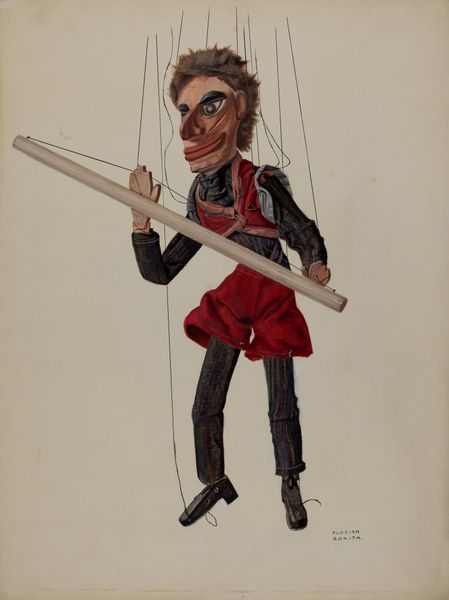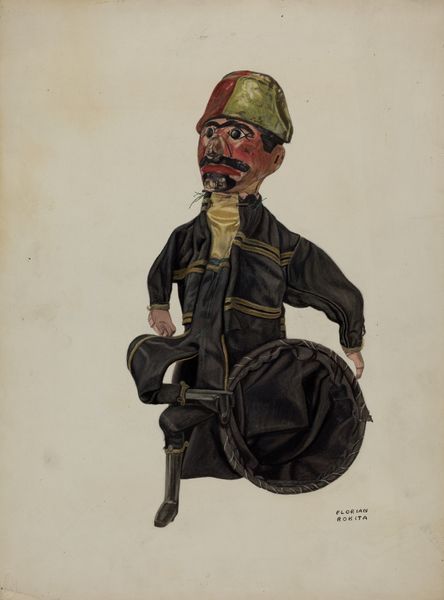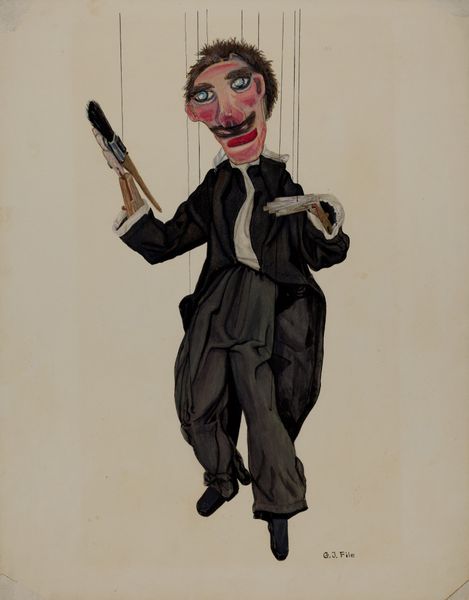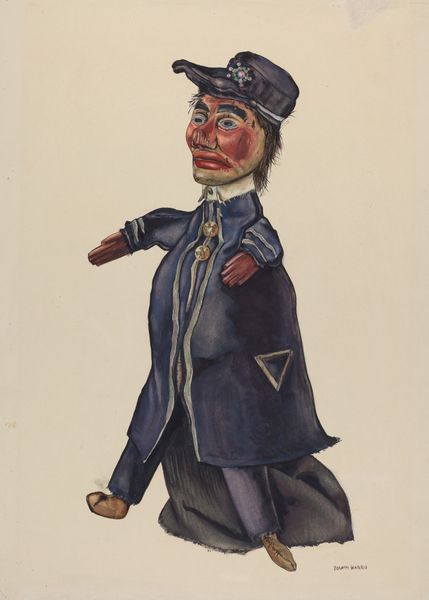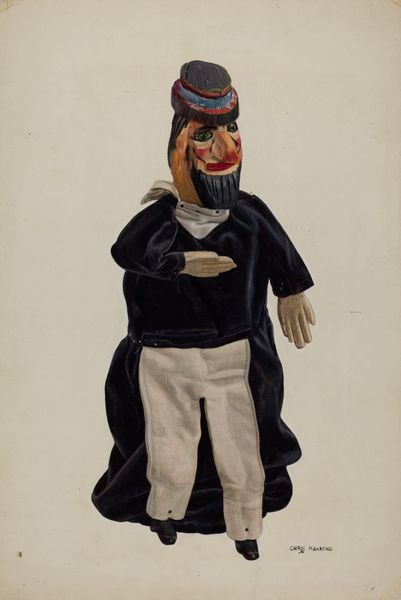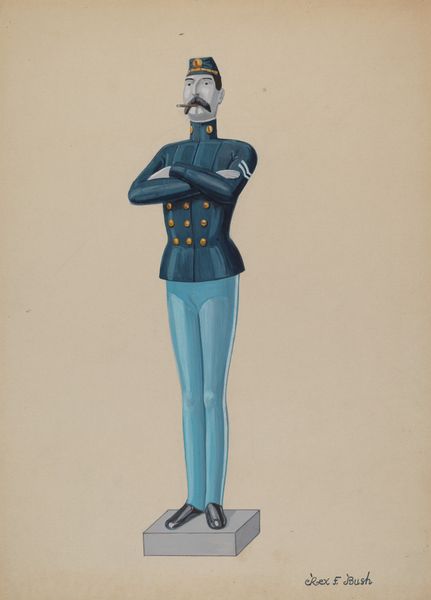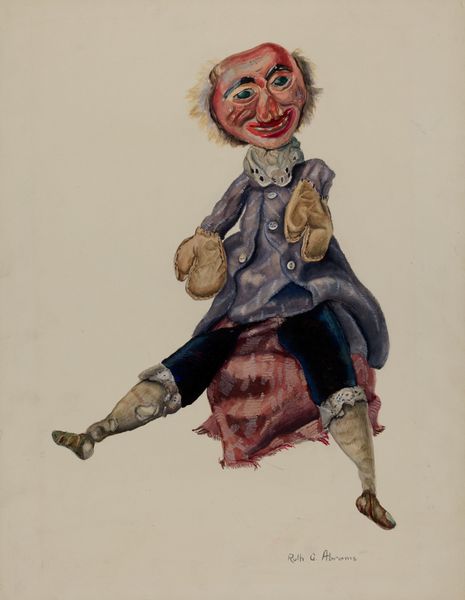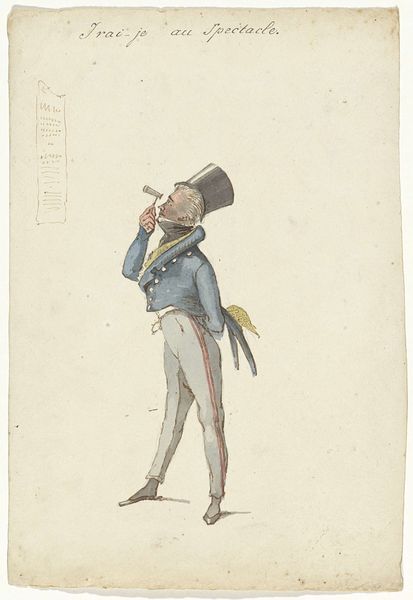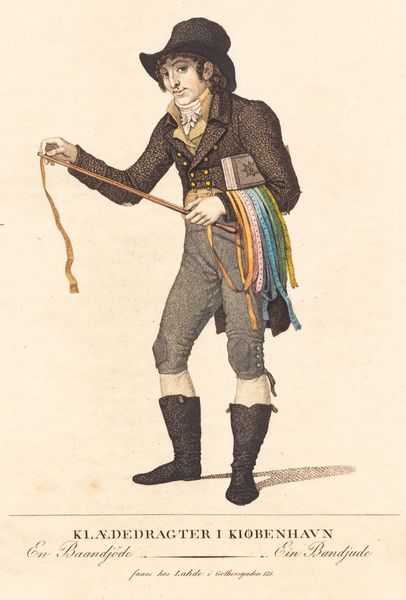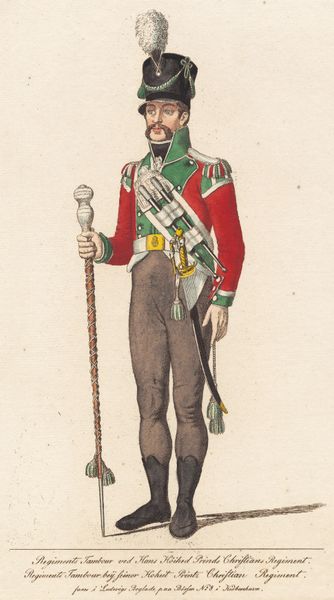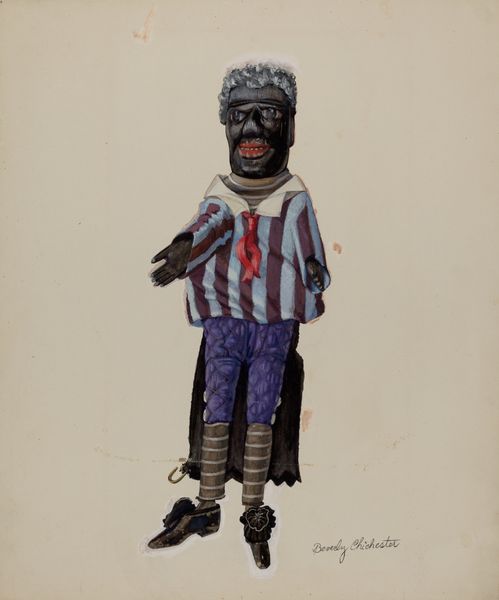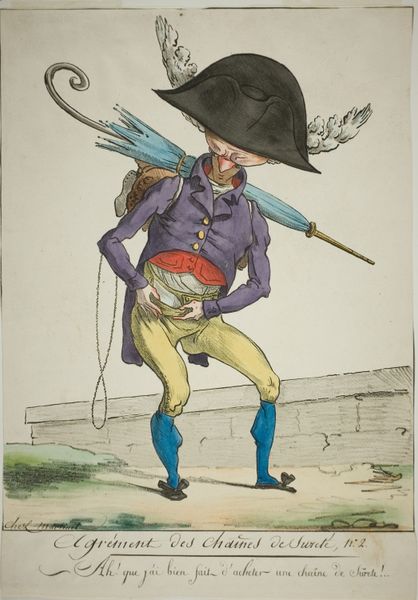
drawing
#
portrait
#
drawing
#
caricature
#
caricature
#
figuration
#
academic-art
#
modernism
Dimensions: overall: 42 x 25.3 cm (16 9/16 x 9 15/16 in.) Original IAD Object: 21" high
Copyright: National Gallery of Art: CC0 1.0
Editor: So, this drawing is titled "Minstrel Marionette," and it was created around 1936 by Elmer Weise. It's rendered in a simple style with a mix of drawing and possibly some watercolor, showing a marionette figure. It gives off a melancholy, almost eerie vibe. What stands out to you when you look at this piece? Curator: What immediately strikes me is the puppet, clearly a reference to the deeply problematic minstrel shows of the time. The exaggerated features and blackface imagery were common caricatures, feeding into harmful stereotypes. It seems Weise is working through a set of ideas about entertainment, and history... Who is really in control? Is this character free, or held by those strings? What kind of history does this imagery recall, or seek to bury? Editor: I see what you mean. It’s disturbing to consider the context, especially with the exaggerated features and costume. It almost feels like the artist is critiquing something, or maybe perpetuating it? The marionette's expression is so ambiguous. Curator: Indeed. Consider the flower, often a symbol of purity and innocence, pinned to the minstrel's suit. Is it ironic? A commentary on the forced innocence imposed upon this character? What about the mallet, the heavy tool held by the marionette? Power? Agency? I am drawn to this character. I'm challenged by it. How are you feeling about this piece now? Editor: It definitely makes you think about the complexities of art, its role in reflecting, and even shaping, cultural perceptions. I really had no idea what this could all mean. Curator: Precisely. Images are never neutral; they carry the weight of history, demanding that we engage critically with their layered meanings. It invites dialogue with our history, not necessarily simple acceptance.
Comments
No comments
Be the first to comment and join the conversation on the ultimate creative platform.
